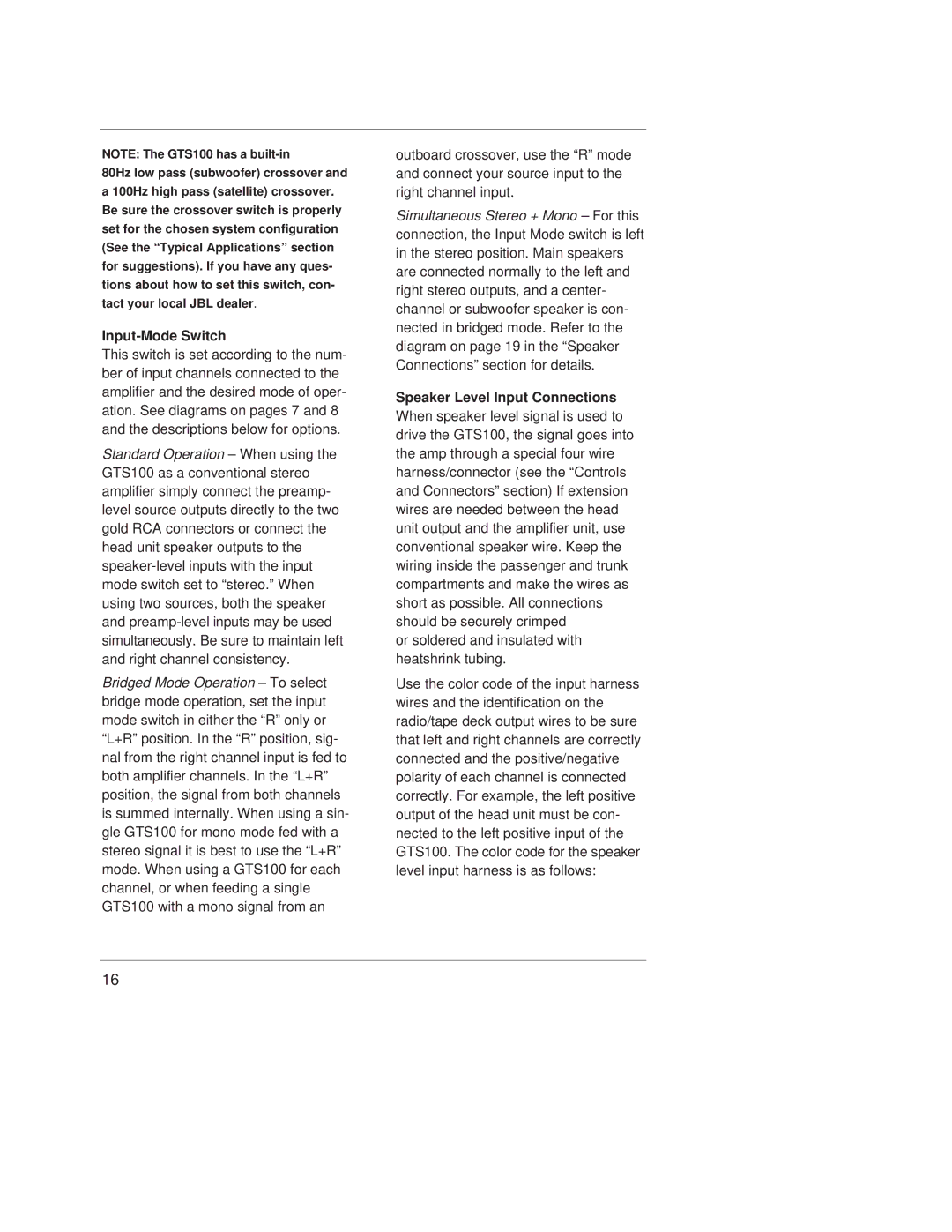
NOTE: The GTS100 has a
80Hz low pass (subwoofer) crossover and a 100Hz high pass (satellite) crossover. Be sure the crossover switch is properly set for the chosen system configuration (See the “Typical Applications” section for suggestions). If you have any ques- tions about how to set this switch, con- tact your local JBL dealer.
Input-Mode Switch
This switch is set according to the num- ber of input channels connected to the amplifier and the desired mode of oper- ation. See diagrams on pages 7 and 8 and the descriptions below for options.
Standard Operation – When using the GTS100 as a conventional stereo amplifier simply connect the preamp- level source outputs directly to the two gold RCA connectors or connect the head unit speaker outputs to the
Bridged Mode Operation – To select bridge mode operation, set the input mode switch in either the “R” only or “L+R” position. In the “R” position, sig- nal from the right channel input is fed to both amplifier channels. In the “L+R” position, the signal from both channels is summed internally. When using a sin- gle GTS100 for mono mode fed with a stereo signal it is best to use the “L+R” mode. When using a GTS100 for each channel, or when feeding a single GTS100 with a mono signal from an
outboard crossover, use the “R” mode and connect your source input to the right channel input.
Simultaneous Stereo + Mono – For this connection, the Input Mode switch is left in the stereo position. Main speakers are connected normally to the left and right stereo outputs, and a center- channel or subwoofer speaker is con- nected in bridged mode. Refer to the diagram on page 19 in the “Speaker Connections” section for details.
Speaker Level Input Connections
When speaker level signal is used to drive the GTS100, the signal goes into the amp through a special four wire harness/connector (see the “Controls and Connectors” section) If extension wires are needed between the head unit output and the amplifier unit, use conventional speaker wire. Keep the wiring inside the passenger and trunk compartments and make the wires as short as possible. All connections should be securely crimped
or soldered and insulated with heatshrink tubing.
Use the color code of the input harness wires and the identification on the radio/tape deck output wires to be sure that left and right channels are correctly connected and the positive/negative polarity of each channel is connected correctly. For example, the left positive output of the head unit must be con- nected to the left positive input of the GTS100. The color code for the speaker level input harness is as follows:
16
